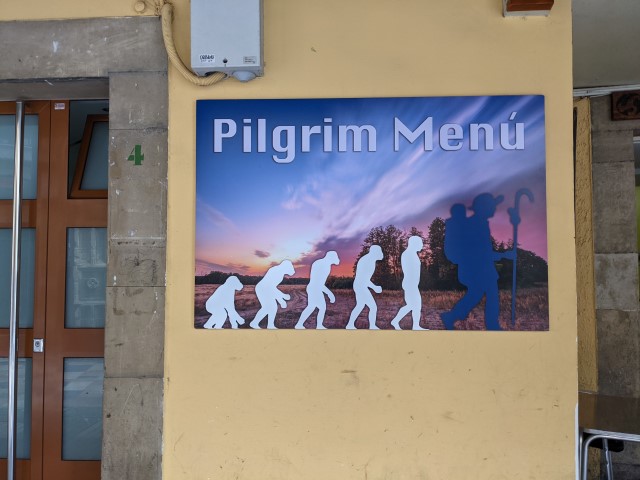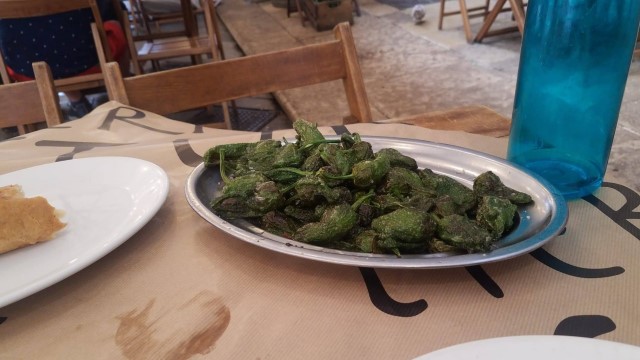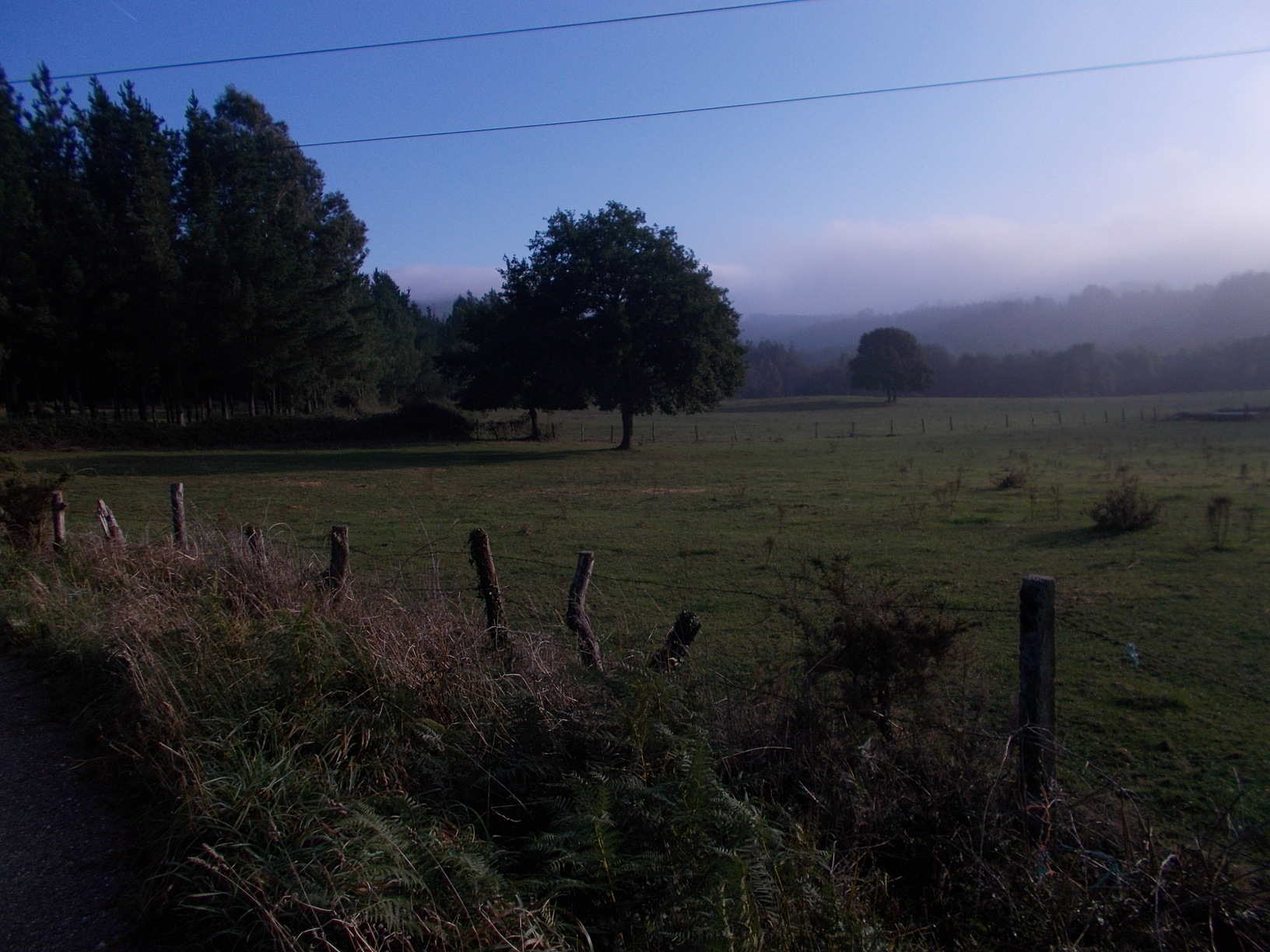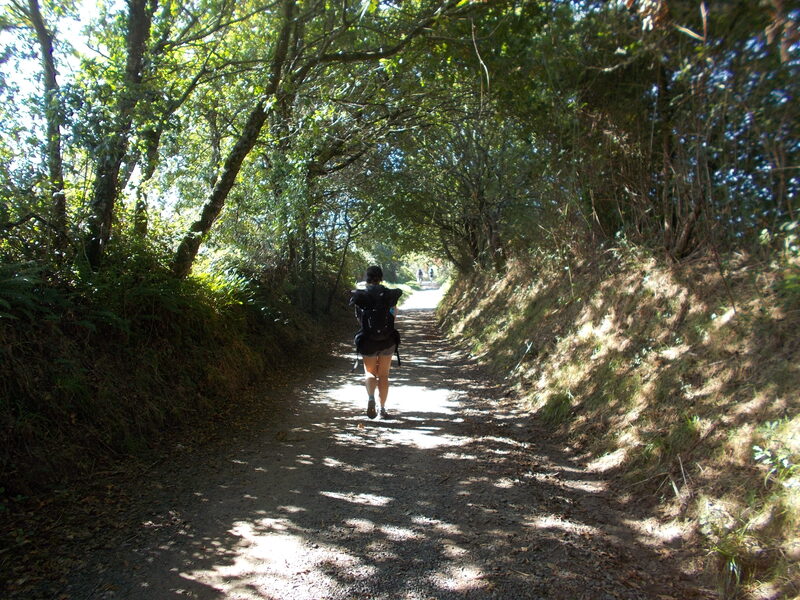I love going for long trips over ancient pilgrims’ roads, or over distant mountain ranges in distant countries. And while people would think the main issues on such trips are planning, navigation, or staying healthy, for me really the biggest issue is food. I’ve been a vegetarian since 2016, and I actually prefer plant based food whenever possible. Sure, if it isn’t possible I can have cheese or yogurt or egg, but I will never ever eat meat or fish again. So the question comes: Is vegetarian diet easy, or at least possible to follow on Camino de Santiago? I will try to find the answers on the following lines.
Table of Contents
Pilgrim’s menu isn’t made for vegetarians
If you’ve been preparing for your Camino for some time, no doubt you’ve heard about the “pilgrim’s menu“, which is basically what 90% of pilgrims eat on their pilgrimage daily, in many local restaurants along the way. You cal always choose from a couple of “primeros”–starters, and a couple of “secundos”-or main courses.
Speaking about starters, you will sometimes find there one or two vegetarian options. Such as a salad–but do not expect anything special here, most of the ingredients come from a can, such as canned peas, asparagus, etc. You’ll get two leaves of a lettuce and a few slices of a tomato, plus typically an egg–and a tuna fish from a can–so make sure to ask for a salad without tuna. And that’s about it for the salad. Sometimes a vegetarian soup is also available, and some of these soups are actually pretty decent.
When it comes to main courses, however, it’s always meat and french fries, or fish and french fries. Needless to say, such food is neither healthy nor vegetarian. But that’s what you get in the pilgrim’s menu.

– “Pilgrim menu”–you’ll see such signs all along the Camino. This particular poster shows “evolution” and pilgrim as the latest step. With our evolution, however, shouldn’t our dietary habits also evolve, so we finally stop eating fellow living creatures?
Speaking Spanish will help you a great deal
Camino (especially the French way) has become very commercial recently, and most people in the restaurants will know basic English. But really the basics, that means a few sentences they use with every customer. If you ask them some special request in English, such as whether you perhaps can have those french fries with an egg or cheese, or perhaps have two vegetarian starters instead of a starter and a main menu, you will find it hard to get your message over in the majority of places–as long as you speak English, or German, or French.
Of course, once you speak the language–maybe another incentive to learn it :), it is much easier asking for this or that and getting something outside of the menu. The good thing about pilgrimage is the community. You will typically meet other pilgrims in these places, and more often than not you may also share the table together. If that’s the case, and at least one person speaks Spanish, they can help you with your vegetarian order.
Vegetarian and vegan selection is Spanish supermarkets has improved tremendously in last 5-10 years
One of the options to eating in restaurants is buying your own food in shops and supermarkets. And the good news is that in my experience, this has improved a lot. Now, you may not get tofu or hummus, or tempeh in small grocery stores–you’ll get it in big ones though. But you will always get some nice yogurts, cheeses (including local production), gazpacho, and of course different bread, including integral (wholegrain) bread in many places. Fruits and vegetables are also plentiful, especially in local “fruterias”–shops that sell only fruits and vegetables.
Now it may sound like a lonely ride eating on a bench next to the shop while other pilgrims stick to the comfort of the restaurants and their menus. Mark my words–you can eat on your own, and then always meet your fellow pilgrims in a restaurant for a coffee, cake, or perhaps just a bottle of mineral water. Doing it this way, you remain part of the community, and at the same time manage to stick to your vegetarian diet, not eating completely unhealthy on your pilgrimage.
Things are better in the albergues–the pilgrim hostels
Number of vegetarians and vegans is growing in the world–which is a great trend of course, and owners of pilgrim hostels took notice. And while they may not have a great understanding for this diet, they will almost always offer you a vegetarian option–as long as they cook in the place of course.
What’s even better, some of the best albergues are owned by conscious people who are themselves on a vegetarian or entirely plant based diet, and will cook such a food for everyone. In my personal (and certainly slightly biased) opinion, each albergue serving dinners should serve such a food. Omnivores eat everything so they should not mind an evening without meat, and people on other diets would not have to worry or make special arrangements just to get their daily intake of calories.

– “Pimientos de Padron”, one of the favorite Spanish dishes for both vegetarians and vegans. You can find it in many places along the French Camino.
Vegetarian and vegan restaurants along the camino
Many new vegetarian and vegan places are popping up in Spain every year, following the trends in eating, and what the customers demand. However, you should not forget that all caminos pass mostly through small towns and villages, and such places often have just one restaurant (or two), and logically none of them is vegetarian.
However, when passing through a city with 50,000 or more inhabitants, you will almost always find at least one vegetarian or vegan restaurant in the city. I plan to put together a list of such places on major Caminos. Until then, however, you can just use the help of your phone to locate such places. Make sure to pay them a visit and support them on your camino. Staff in these places is often super nice, and they will be glad to serve you some healthy vegetarian food.
What is the best and worst camino for vegetarians?
As I’ve said many times in my posts, each pilgrim way in Spain is unique. But which one is the most and the least vegetarian friendly, speaking about major caminos? I would say–and this may surprise you, that the most popular camino--Camino Frances, is the most vegetarian friendly camino. That’s because it is so international. The percentage of pilgrims on special diet walking Frances is no doubt much higher than on other caminos, and owners of restaurants & food kiosks & pilgrim hostels took notice. Definitely you have more options there, though of course exception proves the rule and you will come across places where it will be super tough to get some vegetarian food.
The least vegetarian-friendly way then is Via de la Plata (from Seville to Santiago de Compostela), because that’s really a region of meat eaters, and many of these villages have ham or pig or whatever in the emblem/flag of the village. Do not take me wrong though–this is an amazing Camino, not commercialized yet, and passing through many fascinating historic cities. Just is isn’t vegetarian friendly, and you’ll have to improvise a bit, or carry more food in your backpack, to stay nourished as a vegetarian on this camino.
I would say that Norte, Primitivo and Portuguese are somewhere in the middle. They are not as good as Frances and not as bad as Via de la Plata when it comes to choice and availability of vegetarian food.

– “Museo Jamon”, or “Ham, Museum”, Monesterio, Via de la Plata. This museum sort of sums up the food you can expect to get on Via de la Plata. As you can imagine, I didn’t pay the place a visit 🙂
Cooking your own food in the albergues and along the way
This may definitely sound like a great option, but things have changed a lot on the Camino with covid-19 and also stupid regulations of the local governments. Ten years ago, you could cook your own food in most places, the kitchens were well-equipped, and cooking a dinner together was a thing for many pilgrims.
Now, however, cooking your own food is forbidden in more than half of the places. In some places it is actually allowed, but than the only utilities you find in a kitchen are a microwave, two plates and two forks. Albergues in Galicia are notorious for such kitchens. Obviously such utilities do not allow you many options for cooking actual food.
Of course, you can always carry your own small cooking stove with a small gas bomb, and you will be surprised that some pilgrims actually do that. But in such a case you have to count with an extra load in your backpack, and also with strange looks of pilgrims and locals. Cooking on a bench in a park isn’t really a thing in Spain :).
Final thoughts
Camino de Santiago isn’t the most vegetarian friendly long walk in then world. However, as you can see from this post, you can “survive” this walk as a vegetarian. Sometimes albergue owners will surprise you with a plant-based dinner, sometimes you will eat bread & cheese & tomatoes you got in local shops, and sometimes you will actually come across a vegetarian or vegan restaurant in one of the bigger cities.
Sure, special diet makes every walk (or every stay outside of a house) more tricky to plan and organize, because at the end of the day we have to eat something. But I believe this should not discourage you from walking the Camino de Santiago. Don’t worry-you won’t starve on the way. Camino provides, and with a bit of planing, extra effort, and helping hand from fellow pilgrims, you can actually eat quite well on your Camino as a vegetarian. Enjoy your way!
May also interest you:




![Ultralight Packing List for Camino de Santiago [2025 Edition]](https://caminolovers.com/wp-content/uploads/2022/03/altra-shoes-640-x-480.jpg)


